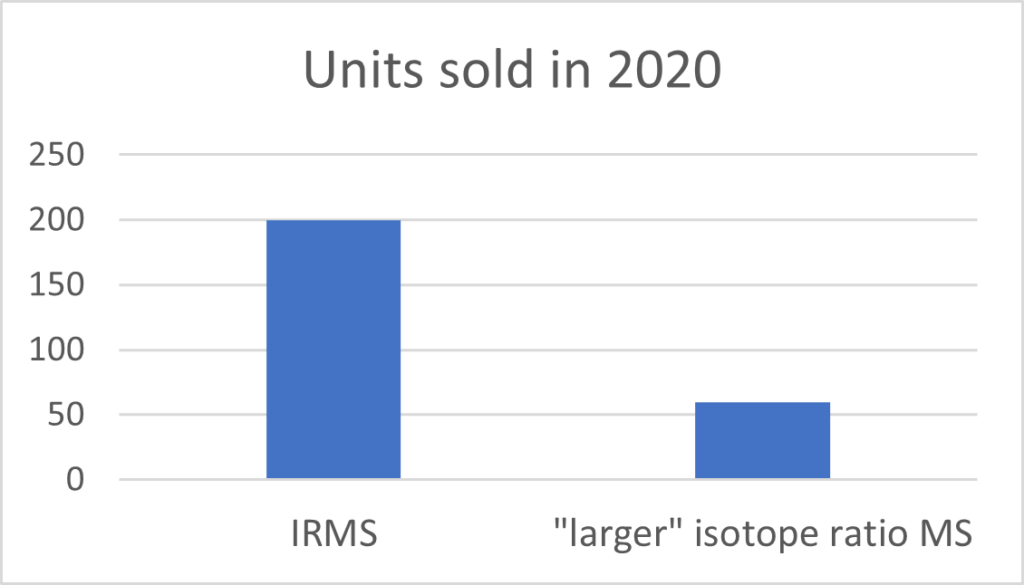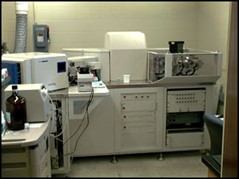Although I’ve worked in analytical instrumentation for most of my working life, I’ve been away from my true love, isotope ratio MS, for nearly a decade. So what’s changed in the intervening years? Actually, there are a number of excellent market reports to give you the facts and figures, but as that data is owned by the report authors, instead I’ll share my own personal experiences and anecdotes. I’m always keen to learn, so if you have anything to add or corrections to make, I’m all ears (Stephen.guilfoyle@isotopx.com).
Firstly, what hasn’t changed? Although there have been some excellent technical advancements, I don’t see that there has been a disruptive and revolutionary technology that has turned this community on it’s head. And the market size seems to have steadied somewhat. My own internet digging (thank you Google and Wikipedia) seems to show that there are about 200 gas source stable isotope instruments (IRMS to you and me) sold per year. And as for MC-ICP-MS, TIMS and noble gas MS (which I will loosely group as the “larger” isotope ratio instruments), the total number seems to be about 50 or 60 units sold. I think that also includes double focusing instruments used for dioxin analysis, but maybe you know better?

One big change, specifically relating to MC-ICP-MS, is in the increased adoption of instrument with collision cells. Those of you with a long memory will recall that the Isoprobe (Micromass, then GV Instruments) used collisional focusing in lieu of an electrostatic analyser (ESA) to reduce the energy spread of the ion beam prior to the magnet. This instrument proved to offer extremely competitive performance at the time and some units remain in operation today.

Today’s collision cell MC-ICP-MS instrument have been designed for the measurement of specific elements that have analytical challenges due to isobaric overlap, often by polyatomic species originating from plasma gases. These elements include S, K, Ca and Fe, amongst others. You probably know that exchange reactions in the collision cell remove or significantly reduce these polyatomic species allowing for better accuracy and precision. It will be very interesting to see what proportion of MC-ICP-MS instruments are fitted with a collision cell in five years’ time.
And what about TIMS vs MC-ICP-MS? Twenty years ago, when I was product manager for an MC-ICP-MS instrument (the Axiom MC, VG Elemental), it looked like the plasma variety would almost completely usurp the thermal ionisation variety, other than in a few niche applications. Did that happen? I’d say not. Whilst there are plenty of MC-ICP-MS instruments sold every year, the market for TIMS has been fairly constant over the last decade. Certain groups, such as the EARTHTIME community (heavily focused on uranium lead geochronology), still rely on TIMS. To a degree the nuclear industry feels the same way, the complex sample preparation techniques for TIMS being entrenched in this well-established community.
When you consider markets and applications, not that much has changed. The biggest users are still the Earth science community, of course including geochronology but also related application areas including oceanography and volcanology. During a recent visit to the American Geophysical Union meeting last December (www.agu.org) I observed that there was significant focus on paleoclimatology, and for obvious good reasons too. That focus may have always been there, perhaps it’s just my own awareness that has increased. It’s good to know that one of the scientific communities that our industry supports is helping to better understand climate change and its long-term consequences.
One application area that has expanded in the last decade is the study of isotopologues (clumped isotopes). It’s clear that there are a number of exciting research areas that can be investigated if these complex molecular species can be precisely measured, and the origins of particular isotopic patterns understood. Carbon dioxide and methane are two obvious examples, both playing their part in climate change.
What about adjacent instrument markets? One big change I can see is that triple quadrupole ICP-MS instruments have really taken off in a big way. Agilent got this market going with the 8800 but now there are a number of vendors including Thermo Fisher and Perkin Elmer that are also playing. For a range of applications including high purity metals and semiconductors, these instrument have proved they are much more capable than “traditional” ICP-MS instruments. It will be interesting to see how this affects the sales of high resolution sector field instruments such as the ELEMENT II from thermo fisher and the Attom from Nu Instruments. To my eyes it seems that these quadrupole-based instruments are not far behind on performance. And there is another emerging technology in this area, TOF-ICP-MS, meaning the options for the customer are even more numerous, particularly if speed is more important than precision.
Thanks for reading! In my next blog post I’ll take a look at potential future technologies in our analytical community, and perhaps I’ll even include a few predictions for the coming years.
